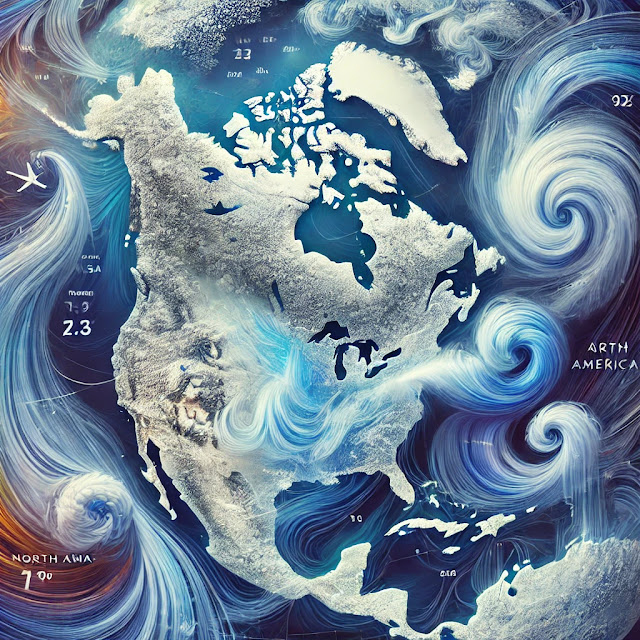Unmasking the Wildfires in the US: A Scientific Perspective on Nature’s Fury and Technological Solutions
Introduction
Wildfires have become an increasingly devastating and frequent natural disaster in the United States, ravaging vast areas, displacing communities, and causing environmental destruction. In recent years, wildfires have escalated due to climate change, human activity, and ecological imbalances. This article delves into the science behind wildfires, their causes, their environmental impact, and the technological advancements aimed at mitigating this growing crisis.
The Science Behind Wildfires
Wildfires, also known as forest or bushfires, are uncontrolled fires that spread across vegetation, fueled by a combination of environmental conditions and human activity.
1. The Fire Triangle:
Wildfires require three elements:
- Fuel: Dry vegetation, grass, and trees.
- Heat: Lightning strikes, sparks, or human activity.
- Oxygen: Abundant in the atmosphere.
2. Causes of Wildfires:
- Natural Causes:
- Lightning strikes: Account for nearly 10% of wildfires in the US.
- Drought conditions: Prolonged dry periods create ideal conditions for ignition.
- Human Activities:
- Campfires left unattended.
- Agricultural burns.
- Power line failures.
3. Climate Change as a Catalyst:
- Rising global temperatures have resulted in:
- Increased frequency of heatwaves.
- Prolonged drought periods.
- Greater intensity of storms and lightning.
Recent US Wildfire Statistics
- In 2023 alone, 70,000 wildfires burned over 7.5 million acres across the country.
- California, Oregon, and Colorado are the most wildfire-prone states.
- Economic damages are estimated to exceed $20 billion annually, with indirect costs on health and air quality.
The Environmental Impact of Wildfires
Wildfires significantly affect ecosystems, air quality, and global carbon levels.
Air Pollution:
- Wildfires emit large quantities of carbon dioxide, carbon monoxide, and particulate matter (PM2.5).
- Smoke from wildfires has been linked to respiratory diseases, including asthma and bronchitis.
Soil Degradation:
- High-intensity fires destroy organic matter, leaving soil infertile.
- Increased erosion risks after vegetation loss.
Biodiversity Loss:
- Endangered species face habitat destruction.
- Some species, however, depend on fire for regeneration (e.g., certain pine cones open only under intense heat).
Scientific Insights and Technological Solutions
1. Fire Weather Prediction Models
- Advanced AI and machine learning algorithms now analyze weather patterns to predict wildfire hotspots.
- Tools like the FIRMS (Fire Information for Resource Management System) by NASA provide real-time fire location and activity data.
2. Satellite Monitoring
- Satellites such as GOES-16 and MODIS monitor fire outbreaks, offering critical insights into spread patterns.
- Thermal imaging technology detects early-stage fires.
3. Drone Technology
- Drones equipped with infrared sensors are deployed to locate hot spots.
- Autonomous drones can assist firefighters in delivering fire retardants to inaccessible areas.
4. Controlled Burns and Fuel Management
- Controlled or prescribed burns help reduce the amount of dry vegetation that acts as fuel.
- Techniques like mechanical thinning and grazing management are employed to minimize fuel load.
5. Advanced Firefighting Methods
- Firefighting aircraft, such as DC-10 Air Tankers, drop fire retardants over affected areas.
- Robotics and autonomous machines assist in dangerous firefighting scenarios.
Long-Term Mitigation Strategies
- Afforestation and Reforestation:
- Planting fire-resistant species and restoring degraded landscapes.
- Community Awareness Programs:
- Educating people on fire safety and evacuation protocols.
- Urban Planning:
- Developing fire-safe building designs in wildfire-prone areas.
- Legislation and Policies:
- Stronger regulations for utility companies to reduce risks of power line failures.
Future of Wildfire Management
The integration of quantum computing, blockchain technology, and 5G networks promises even better real-time monitoring and faster decision-making in wildfire management. For example:
- Blockchain can store tamper-proof fire event records, aiding in better data analysis.
- Quantum computing may revolutionize fire spread modeling, offering solutions in seconds.
Conclusion
Wildfires represent a formidable challenge for the US, blending environmental, economic, and health crises. However, with scientific understanding and technological innovations, their impact can be mitigated. By prioritizing sustainable solutions, investing in advanced firefighting tools, and fostering community awareness, the nation can turn the tide against these natural disasters.
SEO Keywords:
- Wildfires in the US
- Climate change and wildfires
- Wildfire management technologies
- Satellite monitoring of wildfires
- Environmental impact of wildfires


Comments
Post a Comment